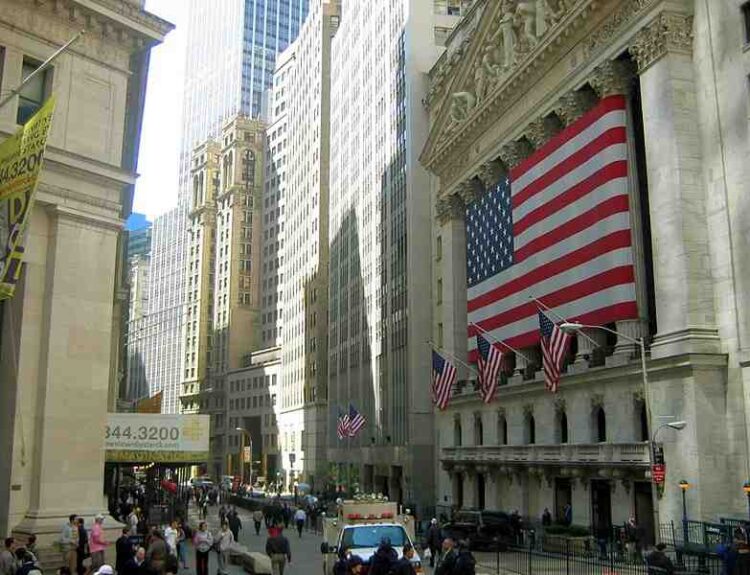Why the Dow Jones Industrial Average is a relic but still relevant
- The Dow Jones Industrial Average is underperforming the S&P 500
- The Dow is a measure of companies that used to be considered great, while the S&P is dominated by currently great companies
- The Dow is lagging behind the S&P by 5 percentage points this year
- The Dow is a badly designed index that gives outsize weight to certain stocks based on share price
- The Dow captures something about the way the market changes, as it is anchored in the past
- The Dow has missed out on the success of companies like Nvidia
- The Dow has remained far behind the S&P only twice since the Great Depression
- The Dow committee resists putting in new members until they have been doing well for a long time
- The Dow has missed another turn in the markets and economy
- Investors watching for a market turning point might worry about Amazon’s admission to the Dow
The Dow Jones Industrial Average is currently experiencing its worst period of underperformance compared to the S&P 500 since the dot-com bubble. This underperformance could indicate that the markets are at another turning point. The Dow is a measure of companies that were once considered great, while the S&P is dominated by currently great companies. As the market changes, the two indexes move apart, with the S&P rebalancing towards newer companies while the Dow remains anchored in the past. This is evident in the success of chip maker Nvidia, which is not included in the Dow but has seen its shares soar over 200% in the past year. In contrast, the Dow’s representation of chip-making, Intel, has seen its shares slightly decline. The Dow is currently lagging behind the S&P by 5 percentage points this year and has remained far behind over the past 4 1/2 years. The Dow’s underperformance can be attributed to its outdated design, which gives disproportionate weight to certain stocks based on share price rather than market value. Despite its flaws, the Dow captures something about the way the market changes and often tries to catch up at the wrong moment. In the past, the Dow missed out on the success of companies like Nvidia and Cisco Systems during the dot-com era. The Dow committee’s resistance to adding new members until they have proven themselves for a long time can be risky, as it often leads to the inclusion of overvalued stocks at turning points in the economy. Currently, with interest rates shifting higher and big tech dominating the stock market, the Dow’s underperformance raises concerns about the market’s direction. Investors watching for a turning point may worry about Amazon’s recent admission to the Dow, similar to the entry of Microsoft and IBM in the past. The Dow’s history serves as a reminder that even the biggest companies, whether Dow components or not, must evolve or risk being left behind.
Factuality Level: 2
Factuality Justification: The article contains a lot of opinion presented as fact, biased perspectives, and speculative statements. It also includes tangential details and historical background that are not directly relevant to the main topic of the underperformance of the Dow Jones Industrial Average.
Noise Level: 3
Noise Justification: The article provides a detailed analysis of the underperformance of the Dow Jones Industrial Average compared to the S&P 500, discussing historical trends, market dynamics, and the composition of the Dow. It offers insights into the potential implications of the Dow’s performance on the broader market and economy, highlighting the importance of adapting to changing market conditions. The article is focused, supported by examples and data, and encourages critical thinking about market trends.
Financial Relevance: Yes
Financial Markets Impacted: The article discusses the underperformance of the Dow Jones Industrial Average compared to the S&P 500, which could have implications for investors and financial markets.
Presence Of Extreme Event: No
Nature Of Extreme Event: No
Impact Rating Of The Extreme Event: No
Rating Justification: The article primarily focuses on the underperformance of the Dow Jones Industrial Average and its implications for the markets. While it does not mention any specific extreme events, it provides insights into the changing dynamics of the market and the potential impact on investors and financial markets.
Public Companies: Nvidia (NVDA), Intel (INTC), UnitedHealth Group (UNH), Goldman Sachs (GS), Microsoft (MSFT), Apple (AAPL), Amazon.com (AMZN), Cisco Systems (CSCO), International Business Machines (IBM), Chrysler (not available), Esmark (not available)
Key People: N/A (N/A)
Reported publicly:
 www.wsj.com
www.wsj.com 





